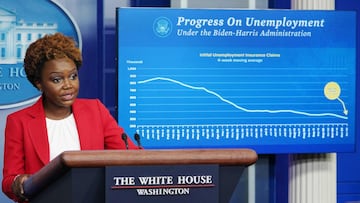US NEWS
How did the US unemployment rate change in October?
The Labor Department released their jobs report for October on Friday morning, with an increased hiring rate compared to September.

After an extremely disappointing September result, the US economy has bounced back in October, adding more than half a million jobs and further decreasing the unemployment rate.
The Labor Department announced that nonfarm payrolls increased by 531,000, with the unemployment rate falling two percentage points to 4.6 percent. The total number of unemployed now stands at 7.4 million people. All these figures beat expectations, which were an additional 450,000 jobs and an unemployment rate of 4.7 percent. The news makes good reading for Democrats, who are seeking to repair the economy as quickly as possible while their agenda makes its way through Congress.
While undoubtedly a positive, these numbers are still far above pre-pandemic levels. The unemployment rate in February 2020 was 3.5 percent, while the total number of unemployed was 5.7 million. Along with this, new weekly unemployment claims came in at 269,000, their lowest level since March 2020.
"On balance, we look for a substantial rebound in the pace of non-farm hiring in October, with gradual improvement in the unemployment rate and sustained strength in earnings growth," wrote Sam Bullard, chief economist for Wells Fargo, in a note ahead of Friday's report. "While positive, employment growth remains constrained by the supply side, and there is little evidence that suggests material improvement is near."
The October report could also point towards the ending of the job vacancy crisis. The US has been struggling with millions of unfilled jobs due to a variety of factors, such as: low pay, poor benefits, too long hours, and much else besides. A high number of workers returning to the workplace will go some way to plug this gap, but the outstanding reasons for the mass resignations still exist.
"My largest concern right now, outside inflationary pressures, is ultimately what happens with this labor supply shortage, because the labor supply shortage feeds into the supply chain issues we're seeing," Kevin Mahn, Hennion & Walsh chief investment officer, told Yahoo Finance.
Related news:
How do the results compare to previous months?
From a high in July with 943,000 new jobs created, and a promising 850,000 created the month prior, there has been a sharp tail off. August surprised a lot of commentators by returning just 235,000 new jobs, when 725,000 were expected. President Biden blamed the low number on the resurgence of covid-19, powered by the Delta variant.
September saw just 194,000 jobs created, one of the lowest of 2021. The Dow Jones had estimated there would be 500,000 new jobs, but this October result seems to be much more positive heading into Christmas.






